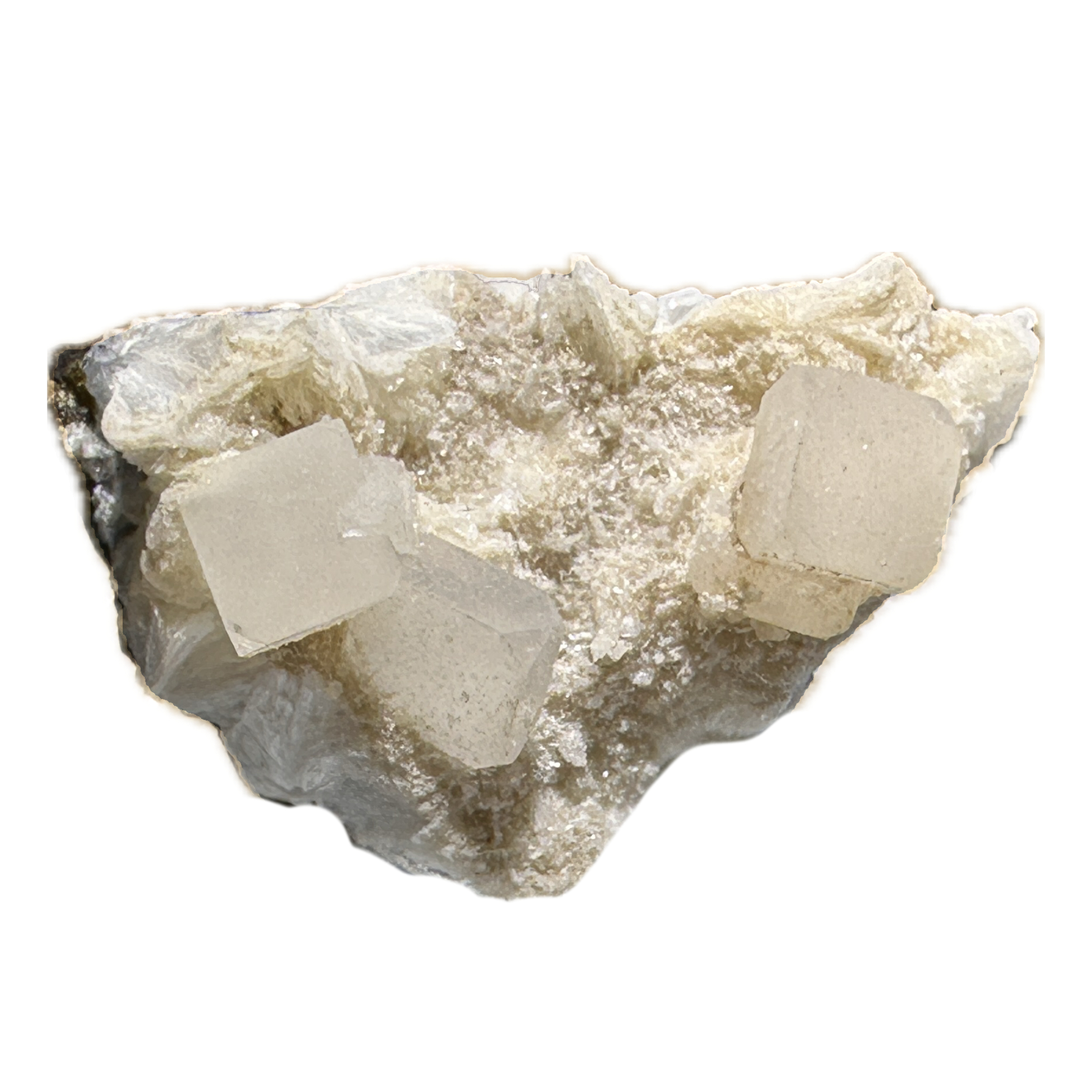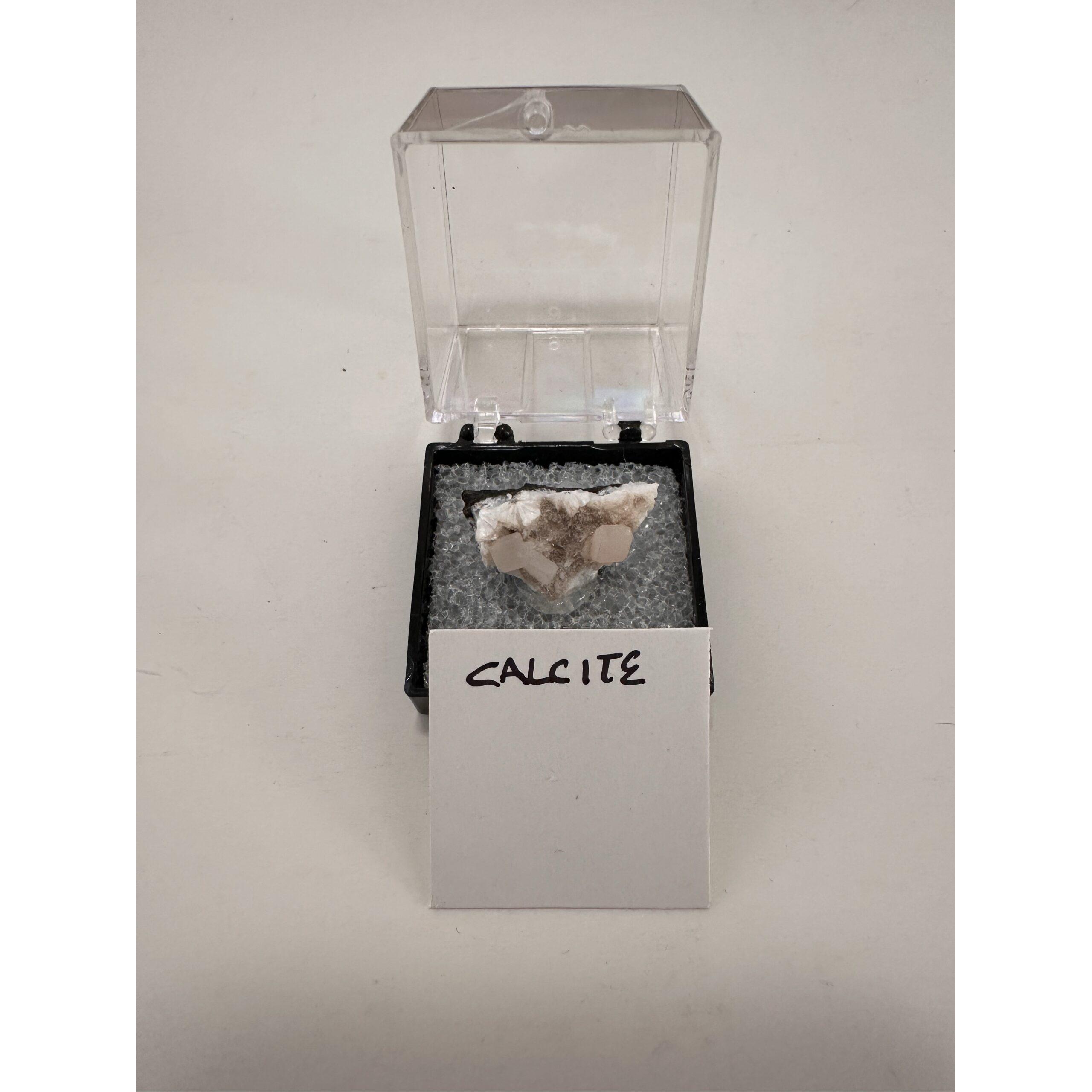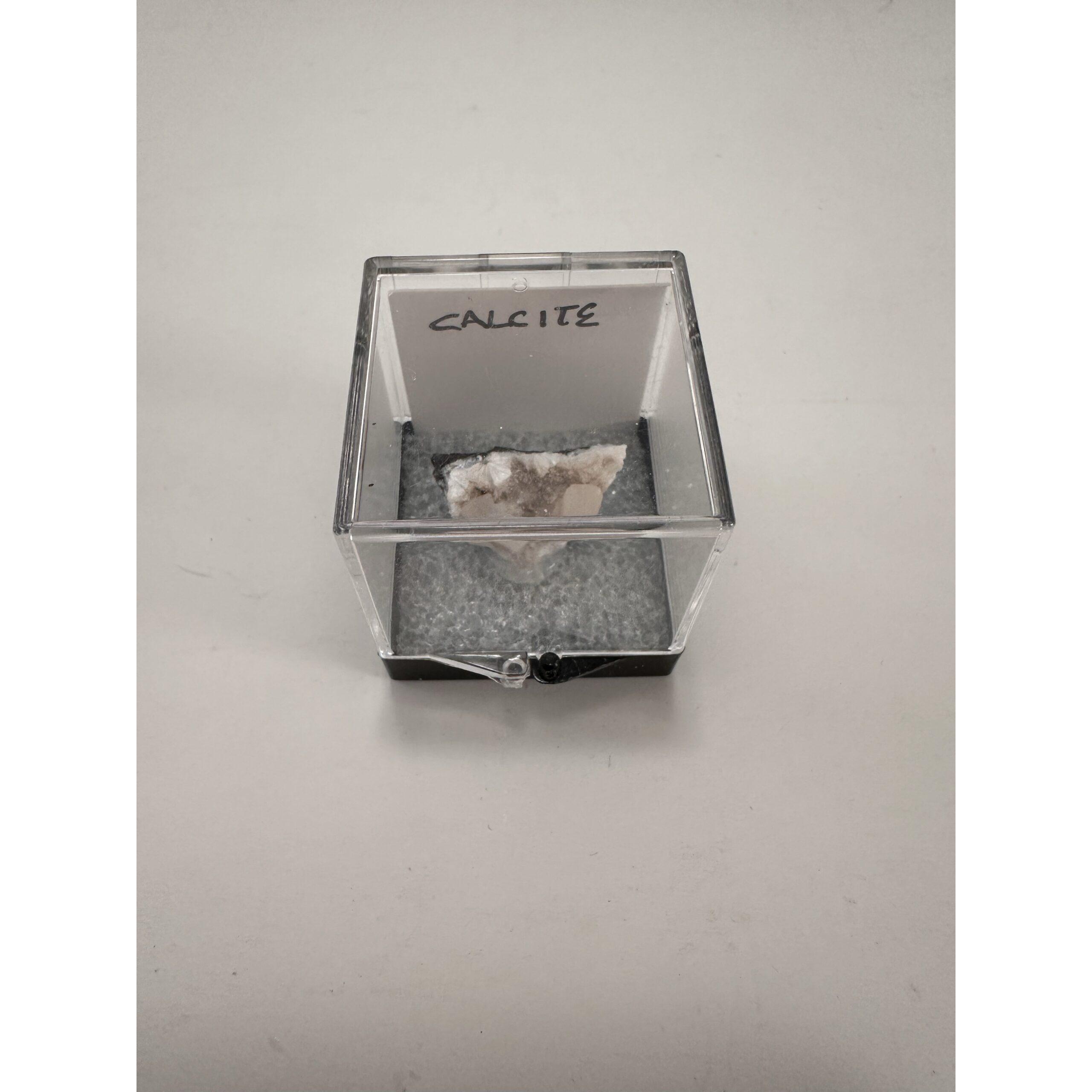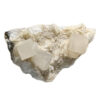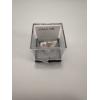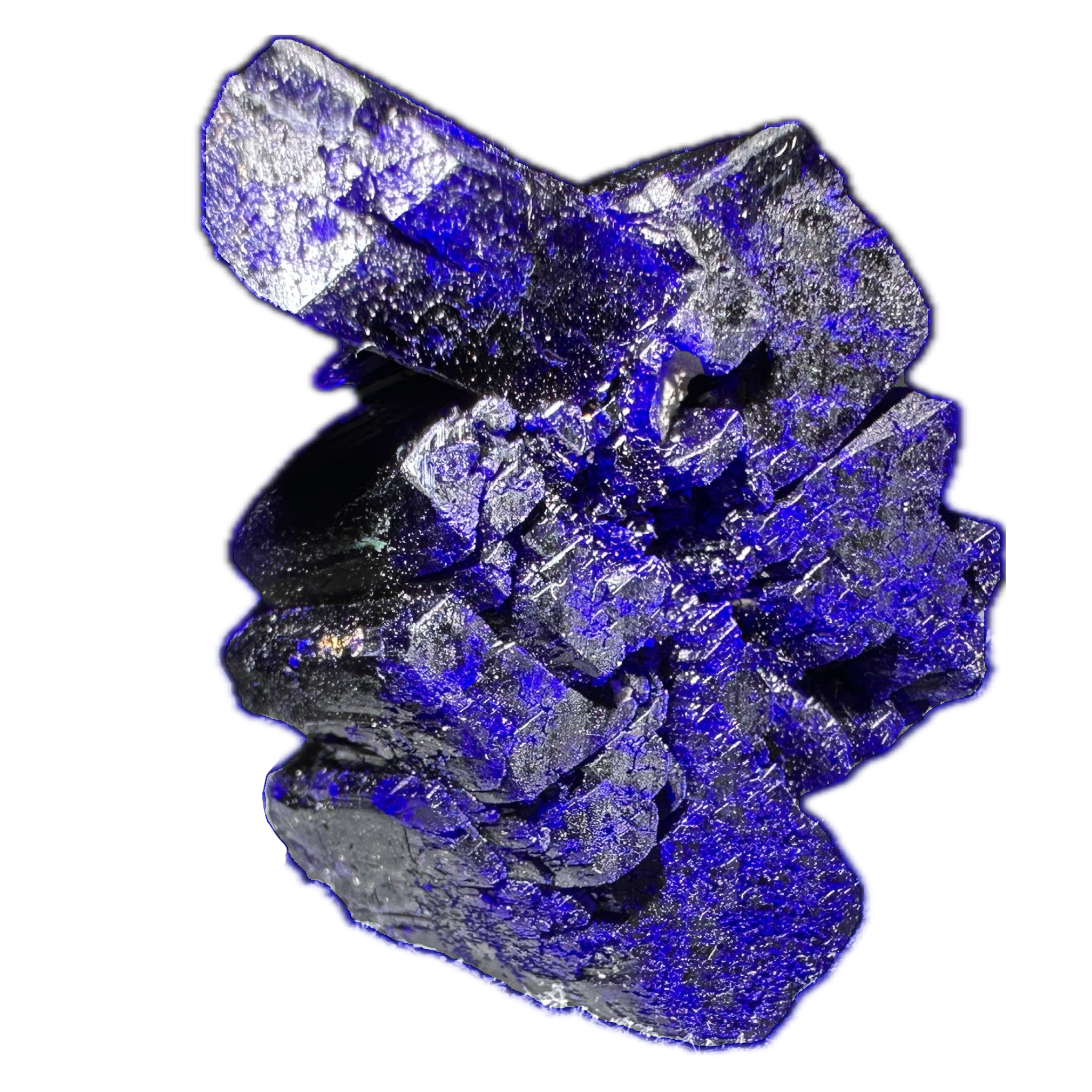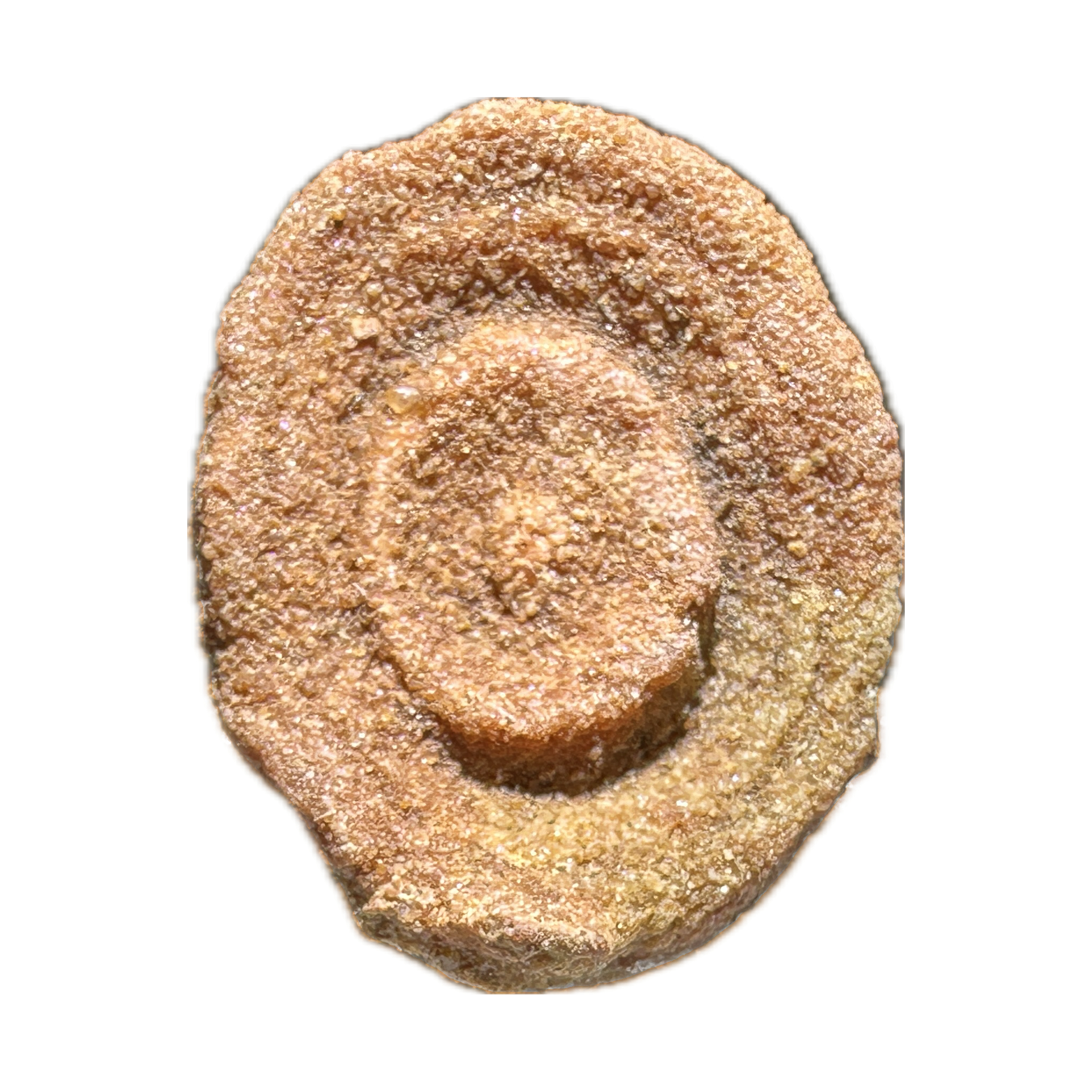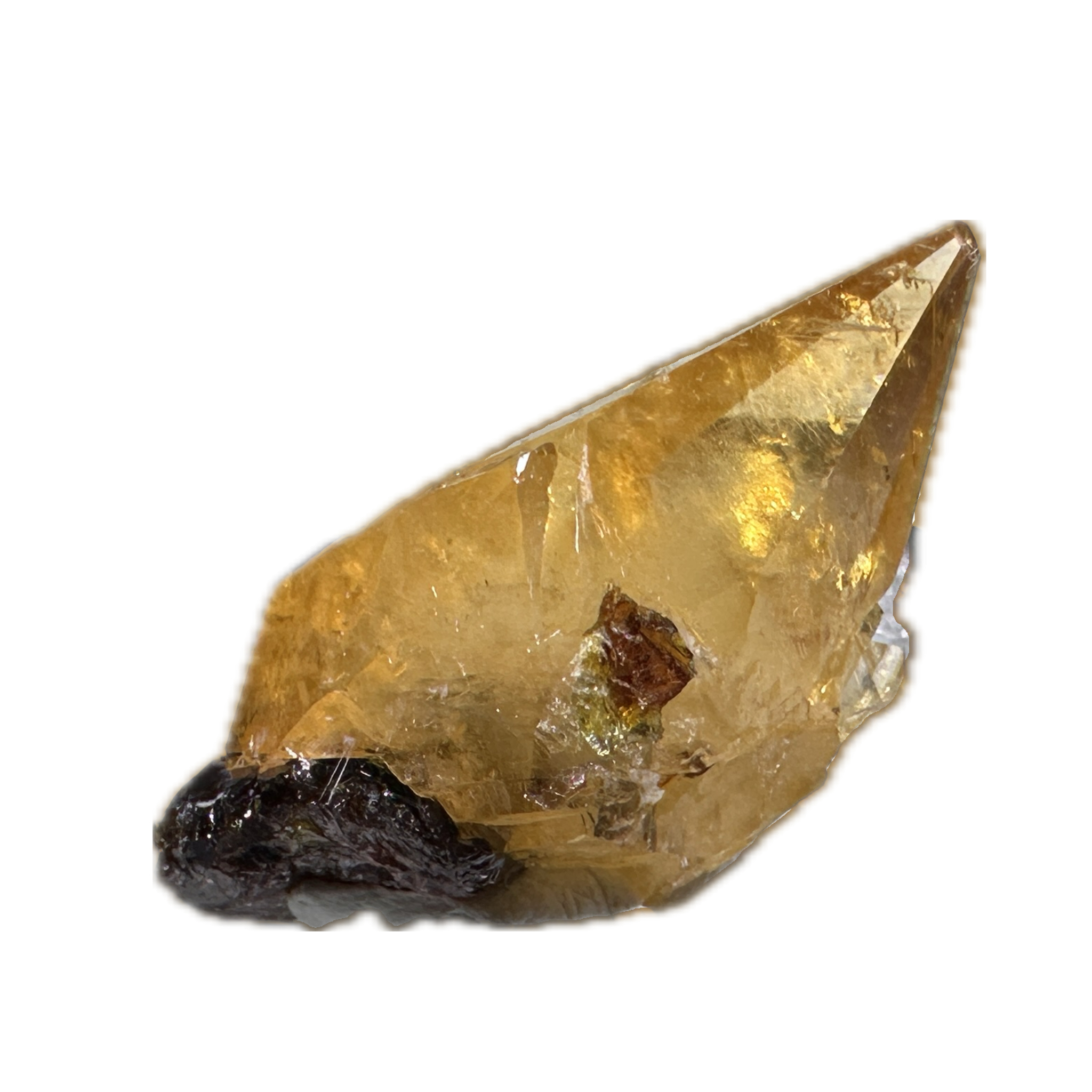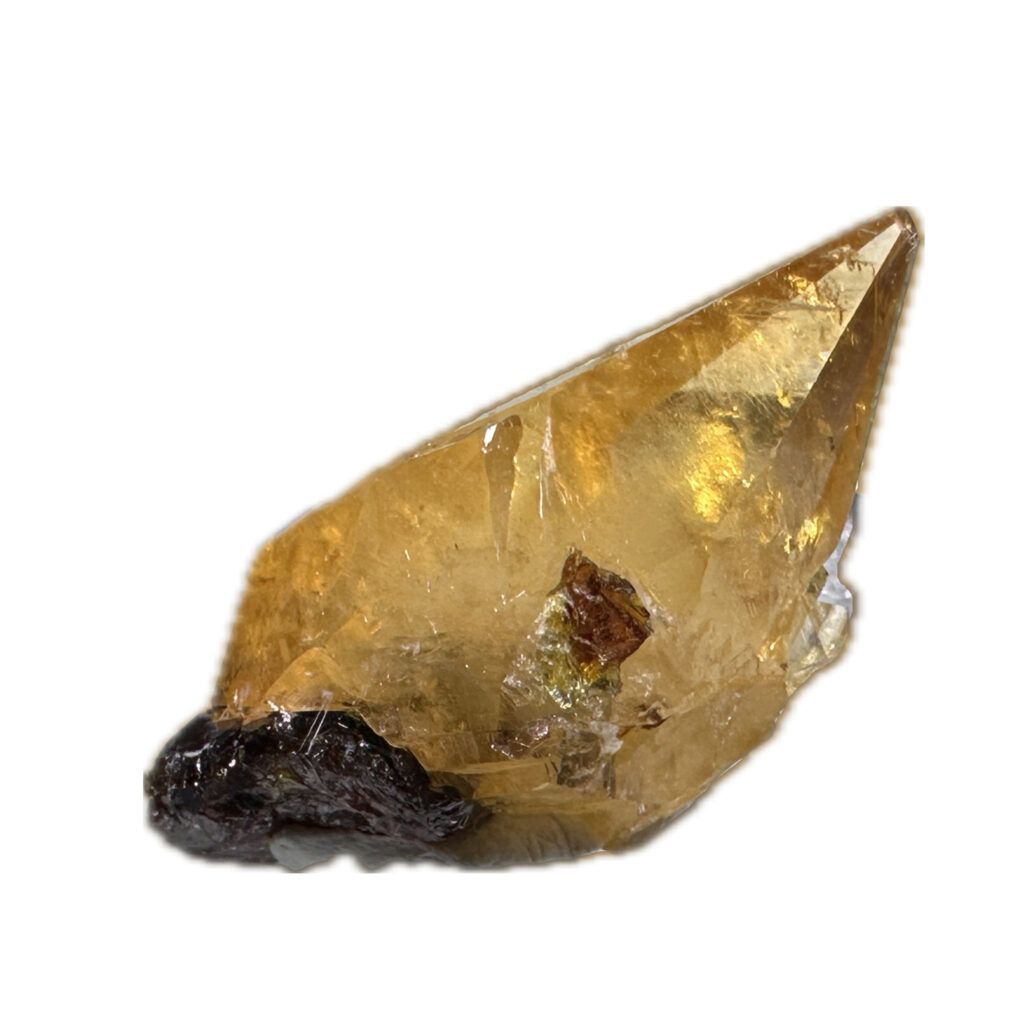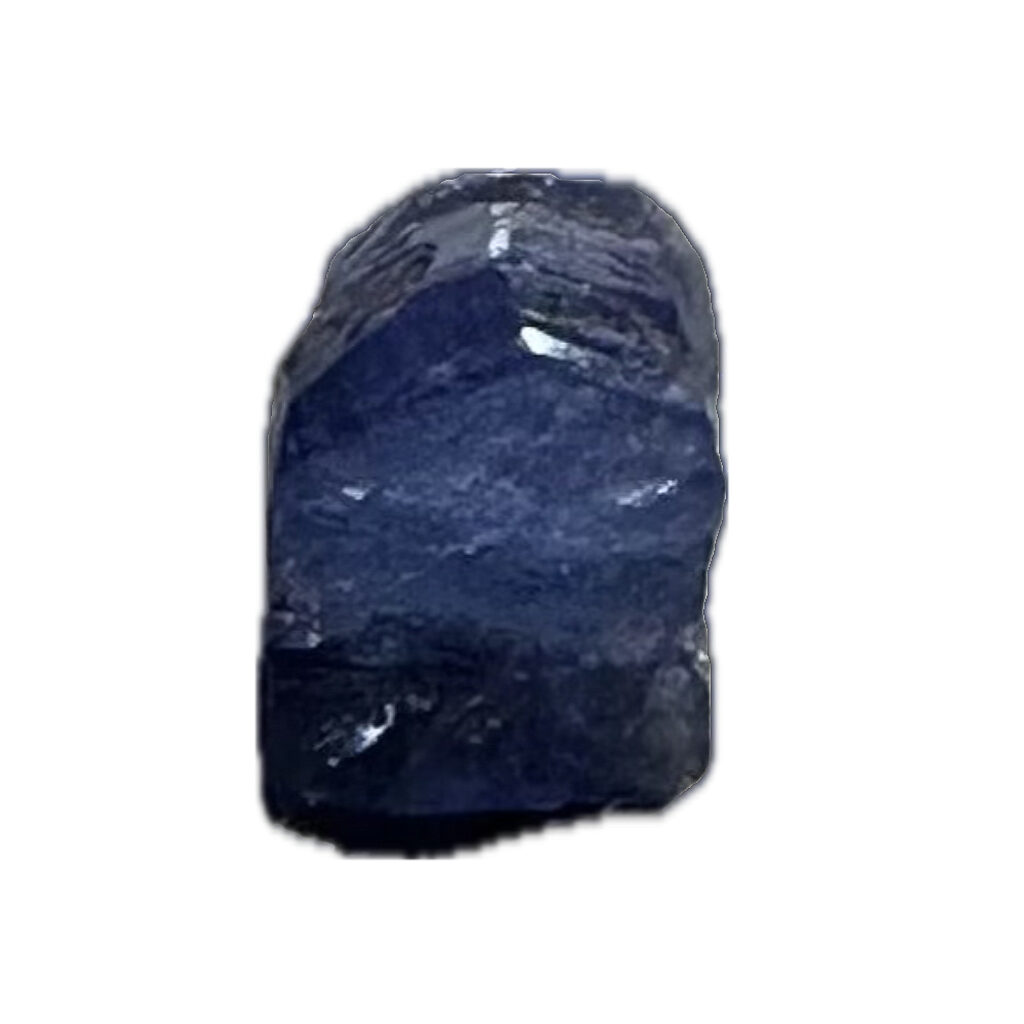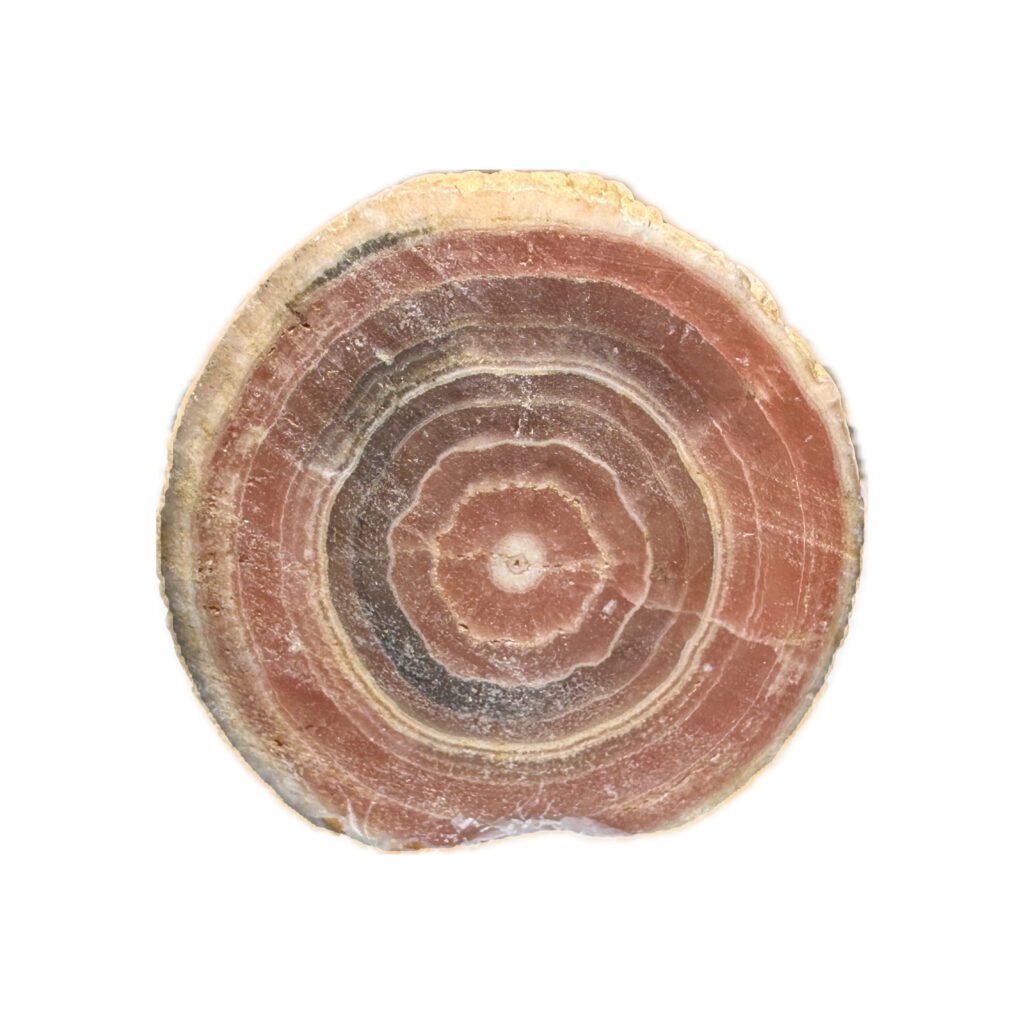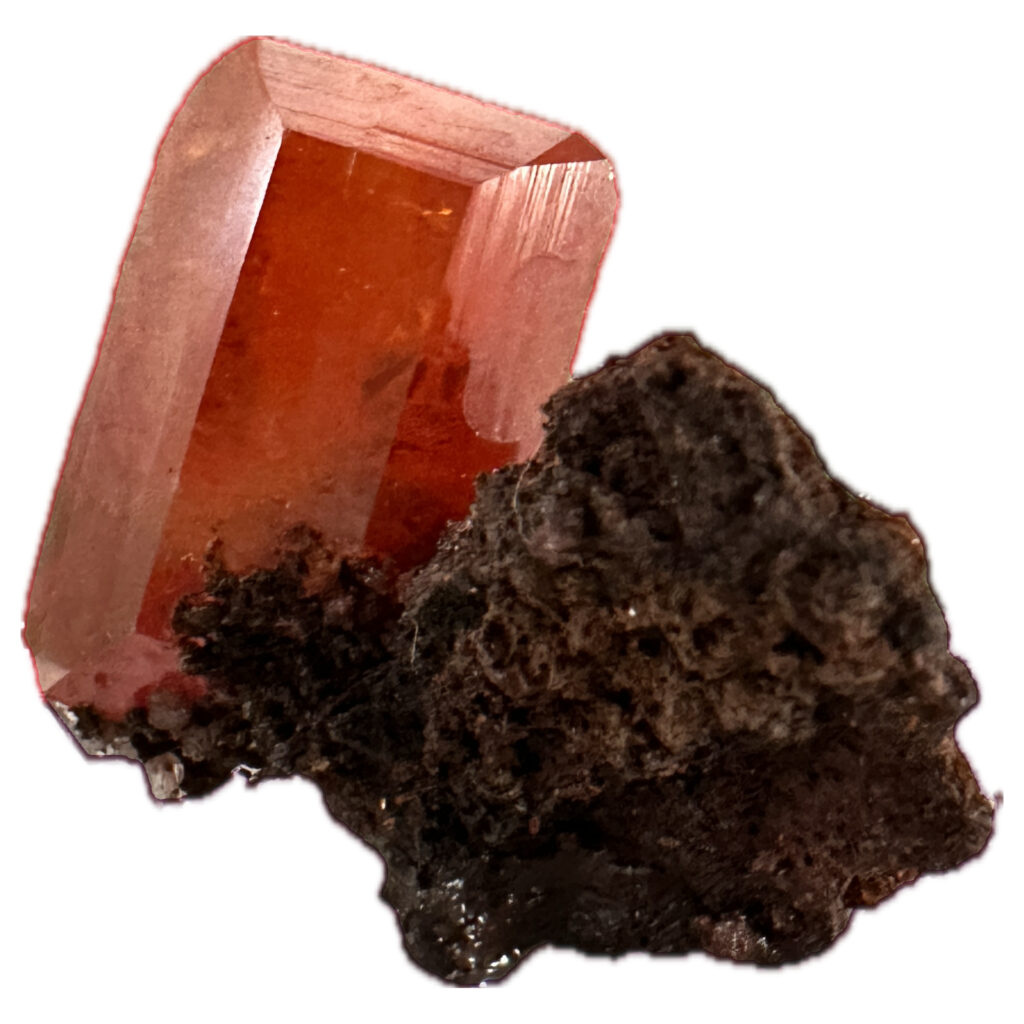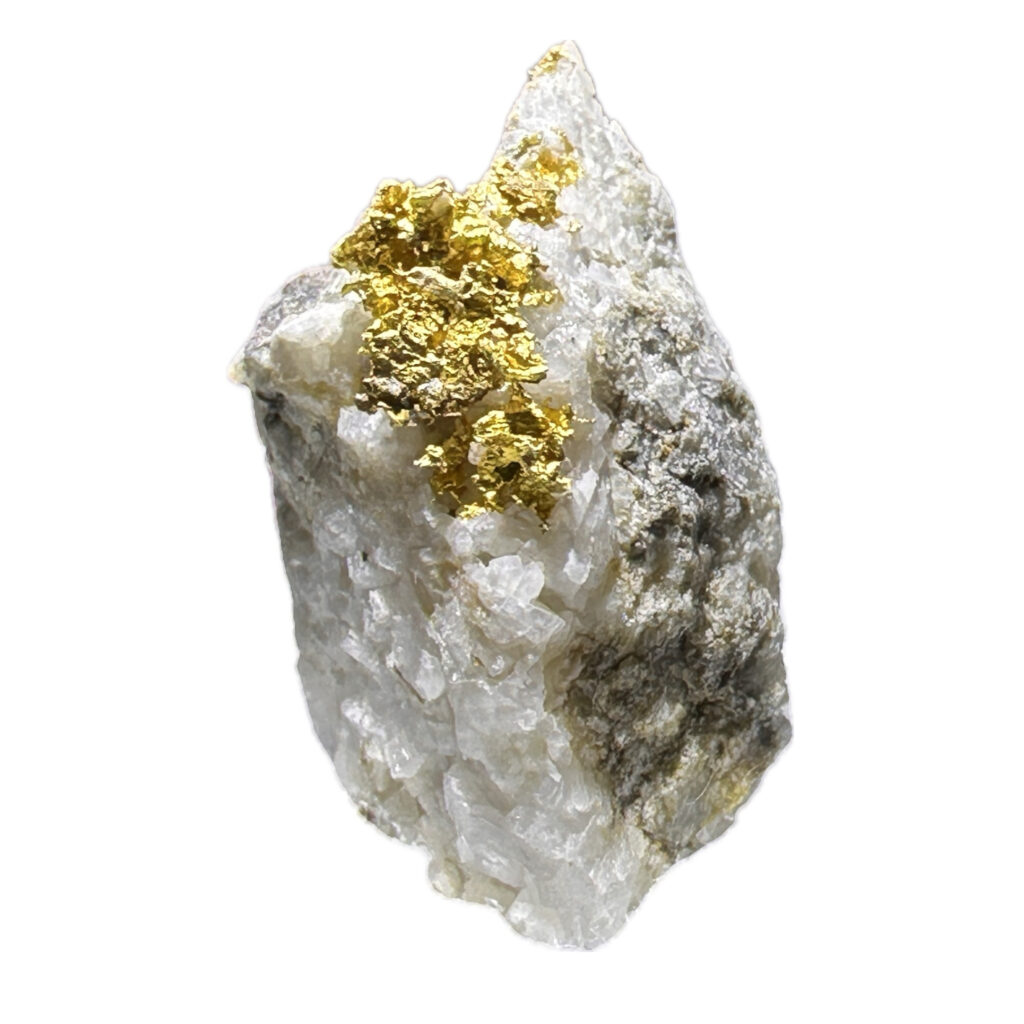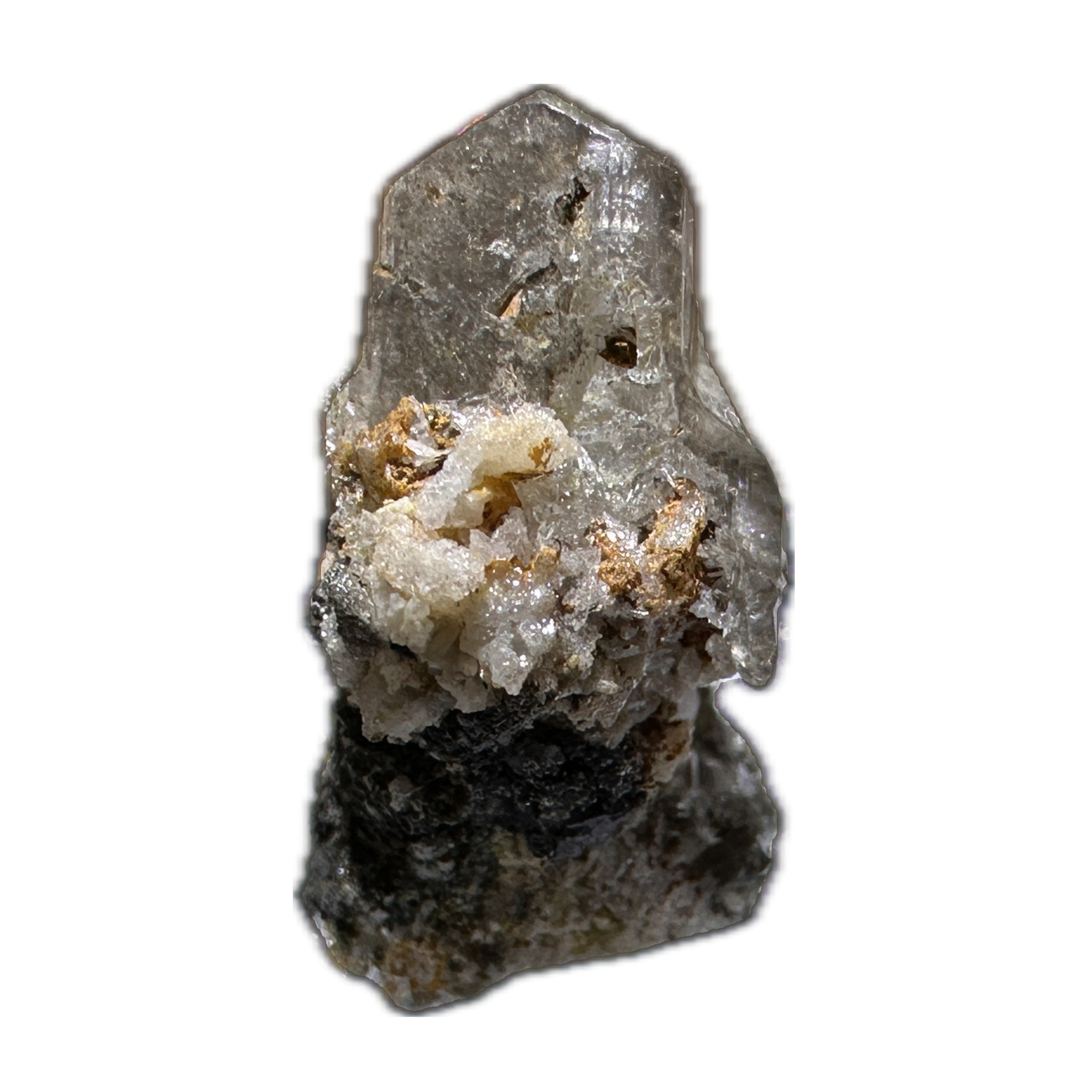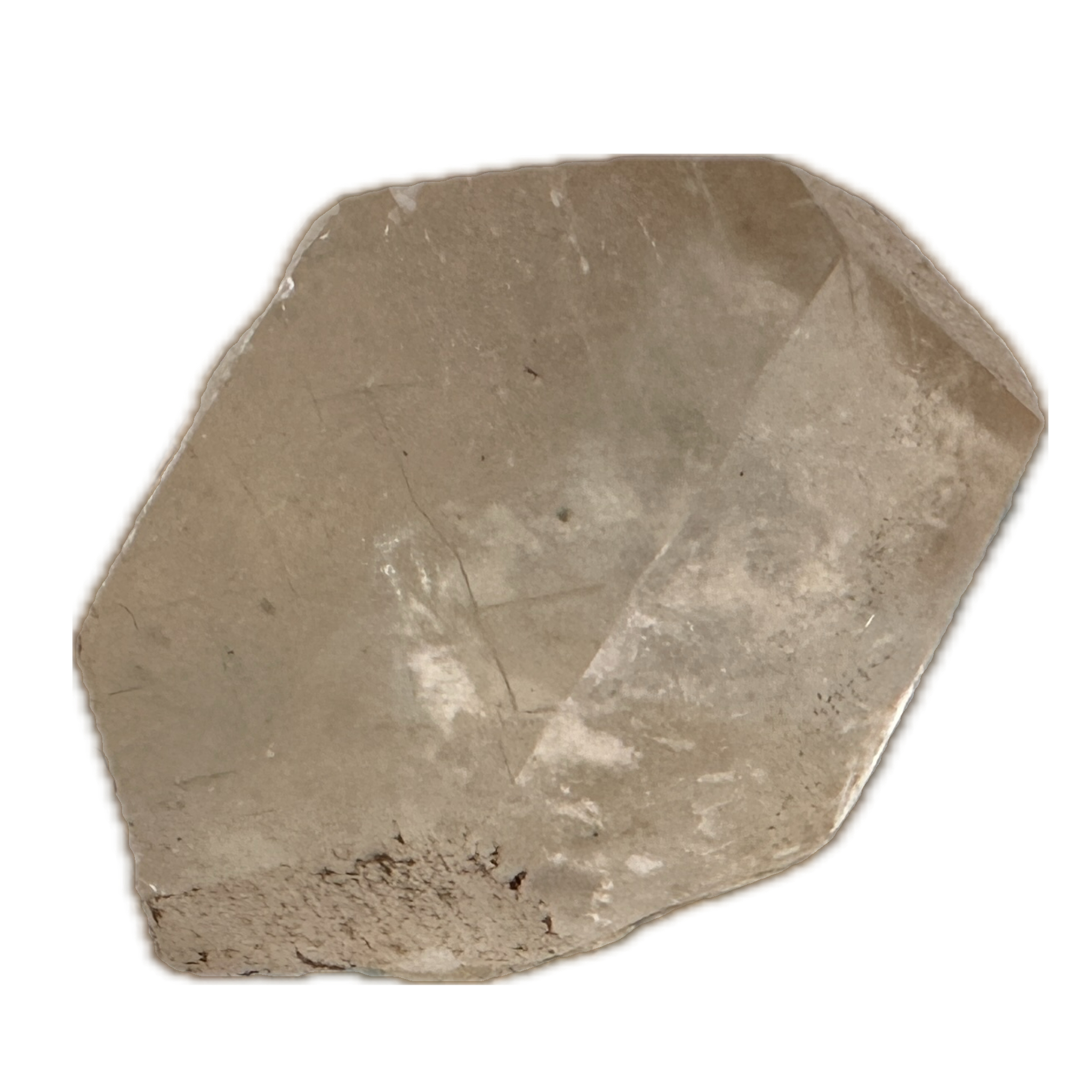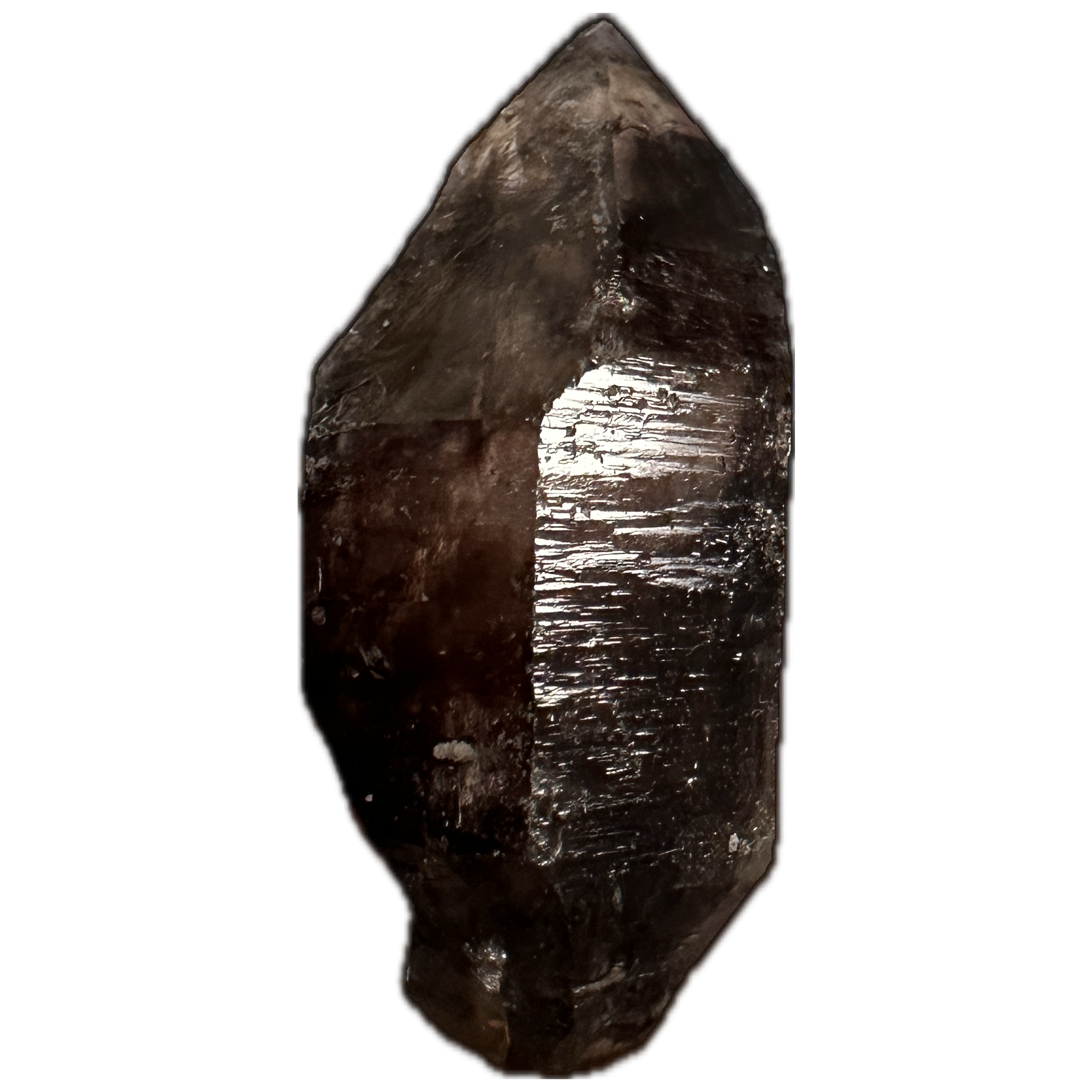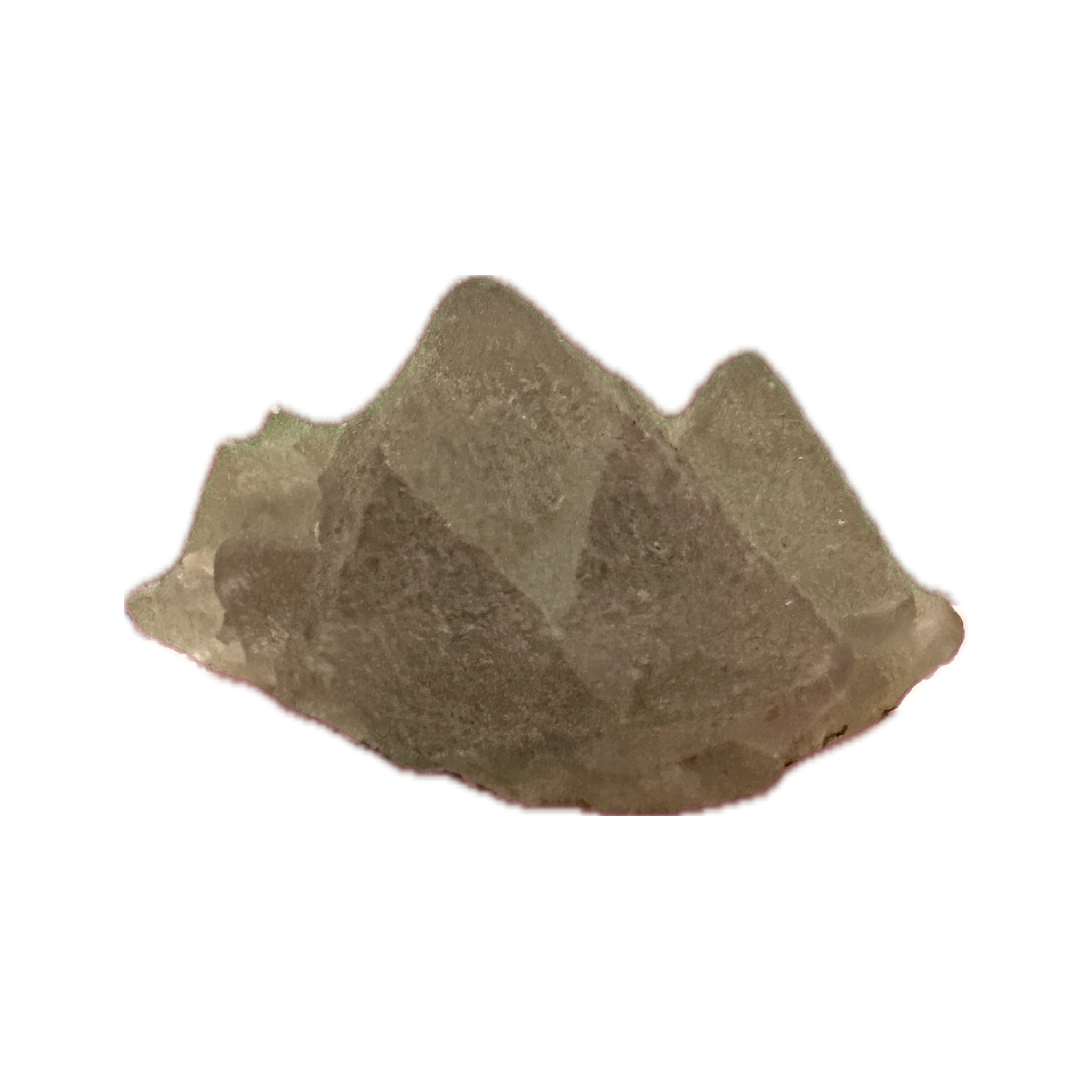Calcite thumbnail mineral, Mexico.
Calcite is a carbonate mineral, and one of the most widely distributed minerals on Earth. It is a common constituent of sedimentary rocks, limestone, and marble. Here are some key points about calcite:
Chemical Composition: Calcite has the chemical formula CaCO3, which means it is composed of calcium (Ca), carbon (C), and oxygen (O). It belongs to the carbonate group of minerals.
Crystal System: Calcite crystallizes in the trigonal crystal system, forming rhombohedral crystals. These crystals often exhibit well-defined cleavage in three directions, forming rhombohedra.
Color: Calcite is usually colorless or white, but it can also occur in various colors due to impurities. Other colors include shades of gray, yellow, green, blue, orange, red, brown, and black.
Transparency: Calcite can be transparent, translucent, or opaque, depending on its composition and impurities.
Luster: The luster of calcite is vitreous (glass-like) to pearly.
Hardness: Calcite has a Mohs hardness of 3, which means it is a relatively soft mineral. It can be easily scratched with a knife.
Reactivity: Calcite readily reacts with dilute acids, producing bubbles of carbon dioxide.
Occurrence: Calcite is a major component of sedimentary rocks like limestone, chalk, and marble. It can also be found in hydrothermal veins and as a gangue mineral in ore deposits.
Twinning: Calcite often exhibits twinning, where two or more crystals grow together to form interpenetrating crystal shapes. This results in distinctive patterns when viewed in thin sections.
Uses: Calcite has various uses in industry and everyday life. Limestone, which is primarily composed of calcite, is used as a building material and in the production of cement. Calcite is also used in the manufacture of lime and as a flux in the smelting of iron ores. Additionally, it is used in the production of glass, fertilizers, and as a decorative stone in the form of marble.
Calcite is an intriguing mineral with a wide range of physical and chemical properties, and its prevalence in the Earth’s crust makes it an important and versatile mineral in various geological processes and human activities.
Thumbnail specimens hold a unique allure in the world of mineral and gemstone collecting, captivating enthusiasts and collectors alike with their petite yet captivating presence. Measuring no more than an inch or so in size, these diminutive wonders possess a distinct charm that sets them apart in the eyes of collectors. To understand why collectors prize thumbnail specimens, we must delve into the fascinating world of mineral collecting, exploring the characteristics and significance that make these tiny treasures so coveted.
Mineral collecting is a hobby as old as civilization itself, with evidence of early human fascination with minerals dating back thousands of years. From ancient civilizations using minerals for ornamental purposes to modern-day collectors meticulously assembling vast collections, the allure of minerals transcends time and culture. Within this vast and diverse hobby, collectors pursue specimens ranging from massive geological formations to minute crystals barely visible to the naked eye. It is within this realm of minuscule marvels that thumbnail specimens carve out their niche, capturing the imagination of collectors with their compact size and exquisite beauty.
At the heart of the appeal of thumbnail specimens lies their diminutive dimensions. Measuring no more than one inch in size, these tiny treasures pack a remarkable amount of geological splendor into a compact package. Despite their small stature, thumbnail specimens often exhibit intricate crystal formations, vibrant colors, and mesmerizing patterns that rival their larger counterparts. Their petite size allows collectors to appreciate the finer details of mineralogy up close, providing a window into the fascinating world of crystallography and mineral formation.
One of the defining characteristics of thumbnail specimens is their rarity. Unlike larger specimens that may be more readily accessible, thumbnail specimens are often limited in quantity and can be challenging to acquire. Their small size makes them easy to overlook in the field, requiring careful searching and meticulous extraction techniques to uncover. As a result, collectors prize thumbnail specimens for their scarcity, viewing them as prized additions to their collections that showcase the beauty and diversity of the mineral kingdom in miniature form.
<img class=”aligncenter wp-image-25070″ src=”https://www.prehistoricoregon.com/wp-content/uploads/2023/11/img_4984-1-1024×1024.jpg” alt=”” width=”575″ height=”575″ />
Thumbnail specimens also hold significant scientific value, offering insights into geological processes and mineral formation. Despite their small size, these specimens provide valuable information about the conditions under which they formed, including temperature, pressure, and chemical composition. By studying thumbnail specimens, scientists can gain a better understanding of Earth’s geological history and the forces that shape our planet. As such, collectors play a crucial role in preserving these specimens for future study, ensuring that valuable geological data is not lost to time.
In addition to their scientific significance, thumbnail specimens hold aesthetic appeal for collectors, who are drawn to their exquisite beauty and intricate detail. Despite their diminutive size, these specimens often display vibrant colors, lustrous surfaces, and geometrically precise crystal formations that captivate the eye. Whether it’s the iridescent hues of a tiny opal, the delicate symmetry of a miniature quartz cluster, or the fiery brilliance of a diminutive garnet, thumbnail specimens showcase the extraordinary diversity of the mineral kingdom in all its splendor.
Collectors are also drawn to thumbnail specimens for their versatility and portability. Unlike larger specimens, which may require specialized display cases or storage solutions, thumbnail specimens can be easily housed in small containers or display cases, making them ideal for collectors with limited space. Their compact size also makes them ideal for travel, allowing collectors to take their prized specimens with them wherever they go and share their passion for minerals with others.
Furthermore, thumbnail specimens often serve as valuable educational tools, providing enthusiasts and novices alike with an opportunity to learn about mineralogy and geology. Their small size and accessibility make them ideal for hands-on exploration, allowing collectors to study mineral properties, crystal structures, and geological formations up close. Many collectors also use thumbnail specimens to educate others about the beauty and diversity of the mineral kingdom, sharing their passion through outreach events, educational programs, and online forums.
Prehistoric 101 (Learn about fossils, minerals, and meteorites)
What is a Mineral?
Discovering Prehistoric Life and Fossils

